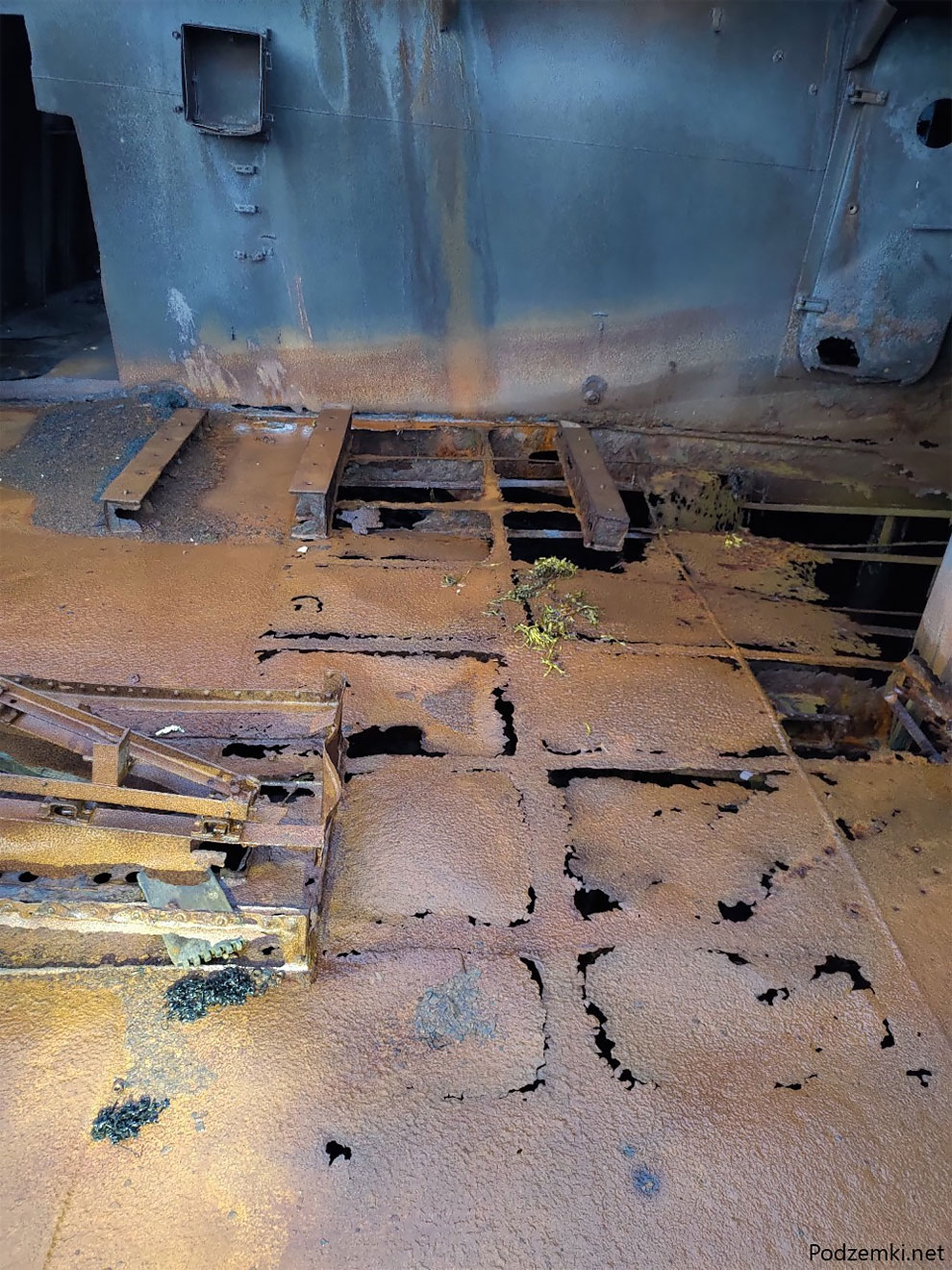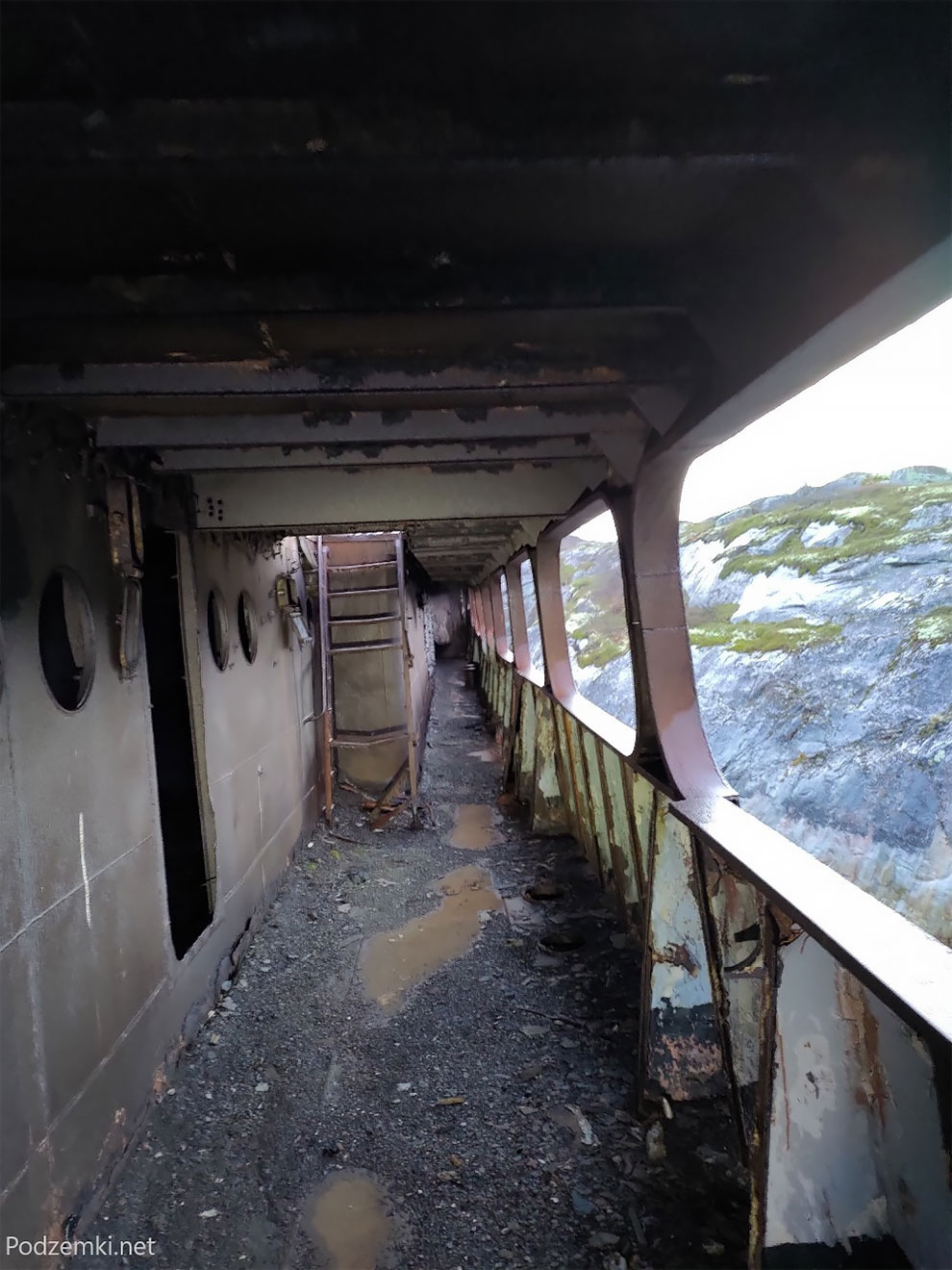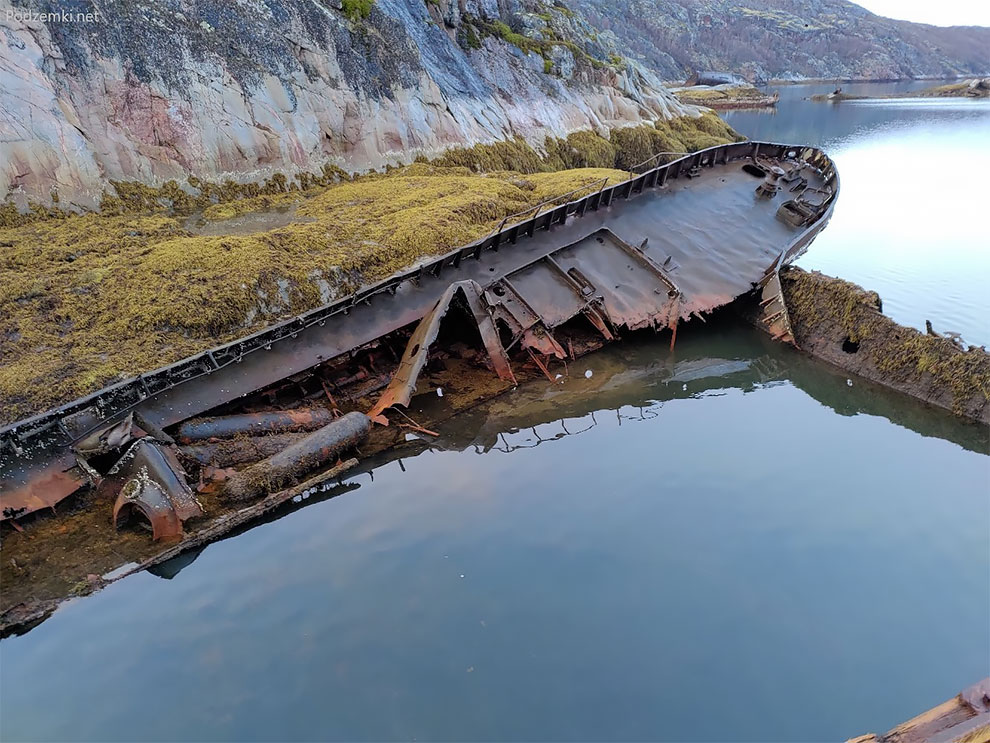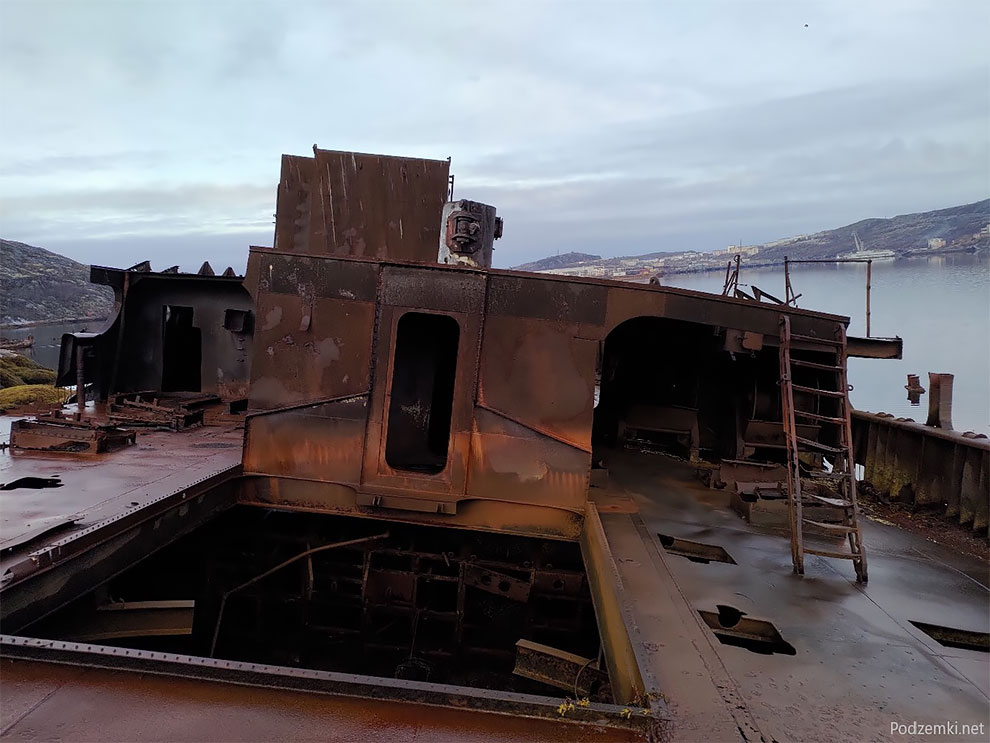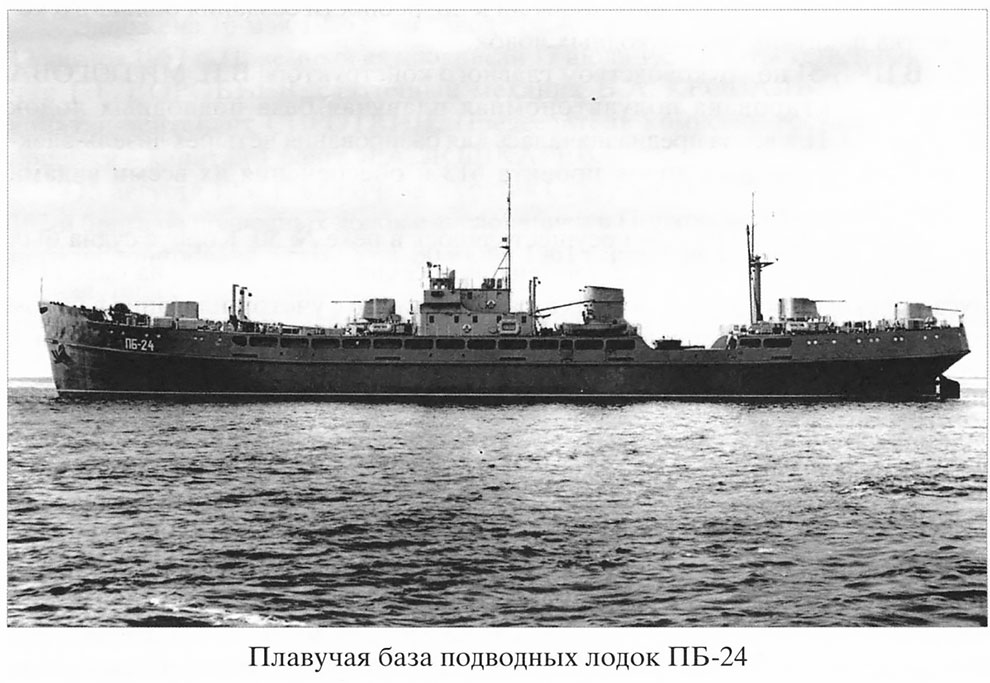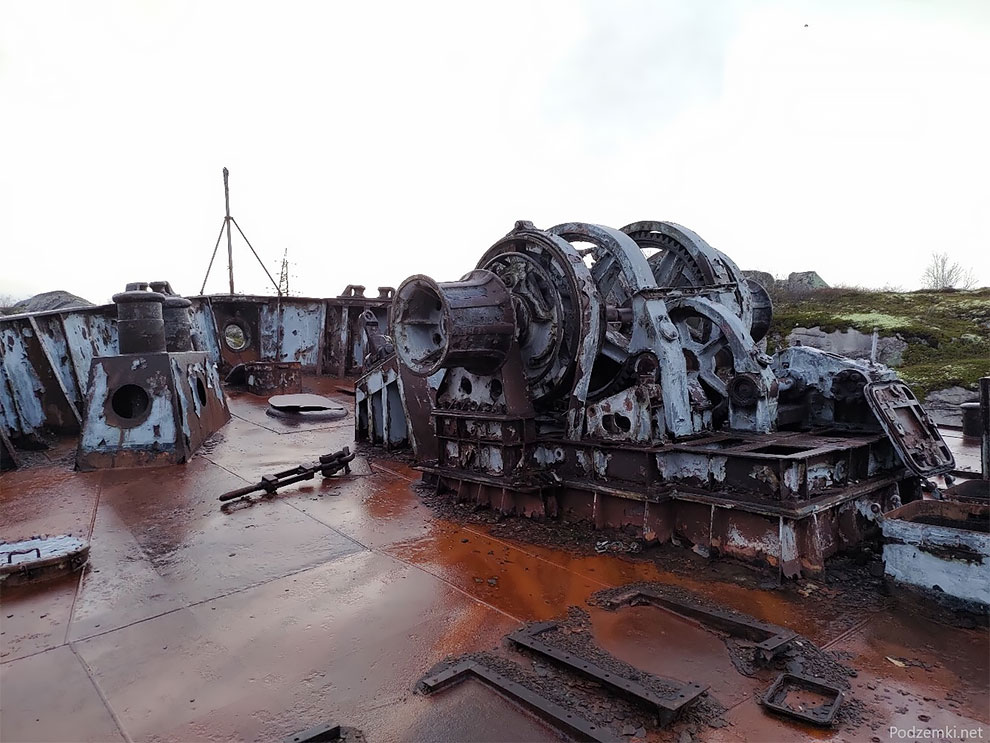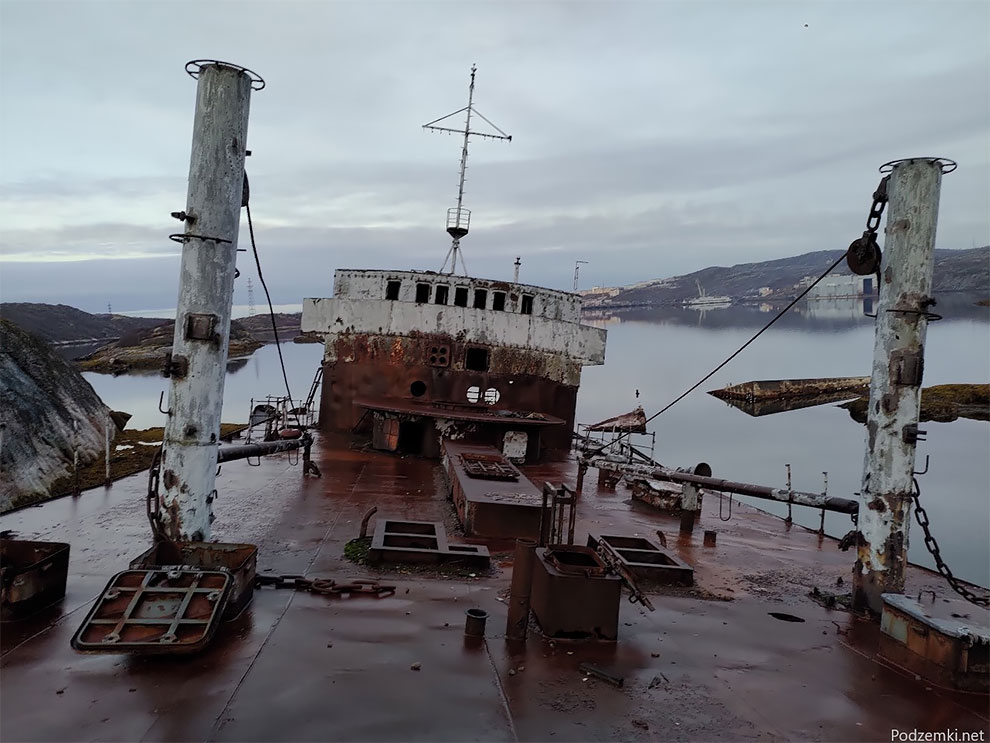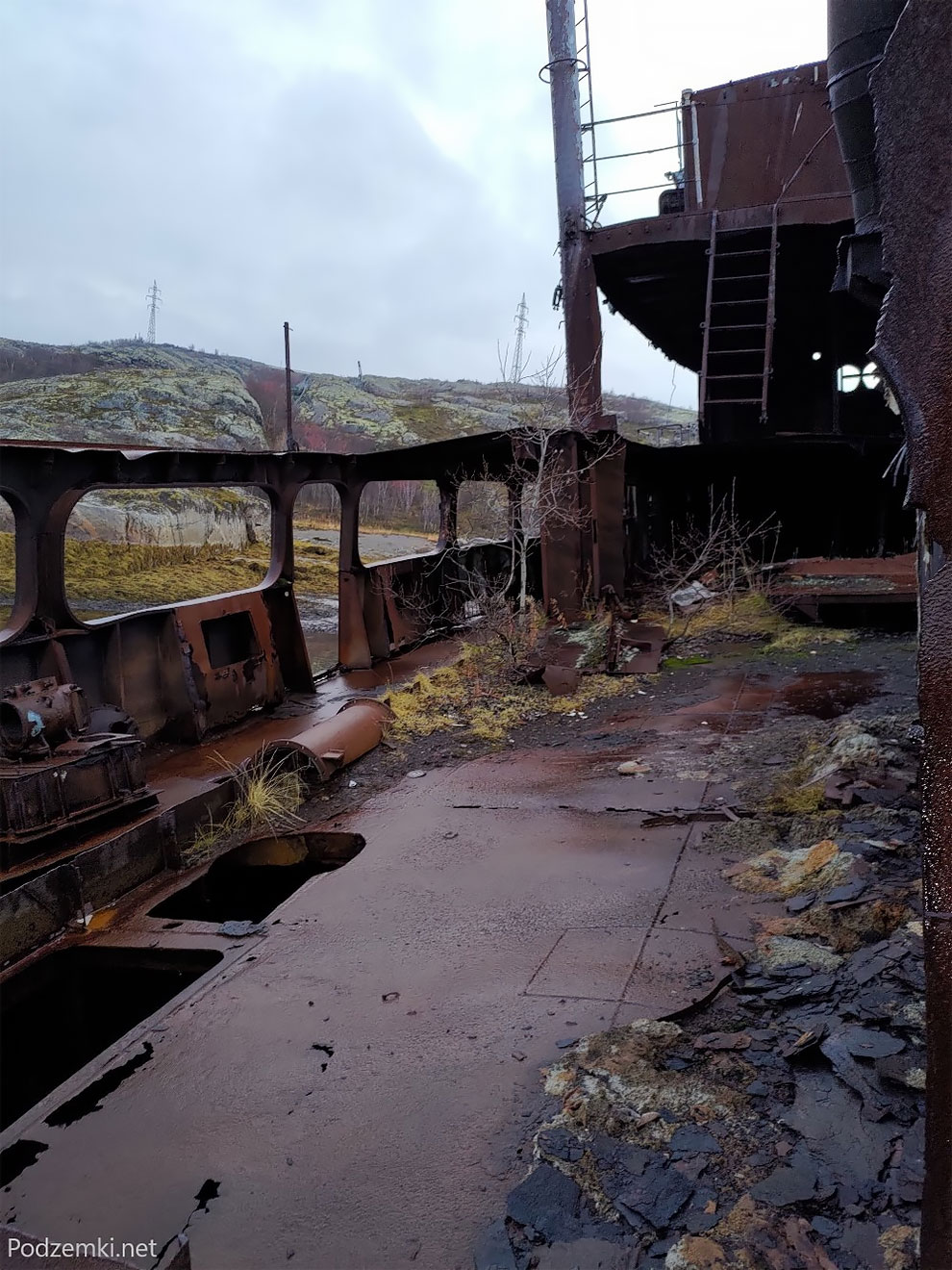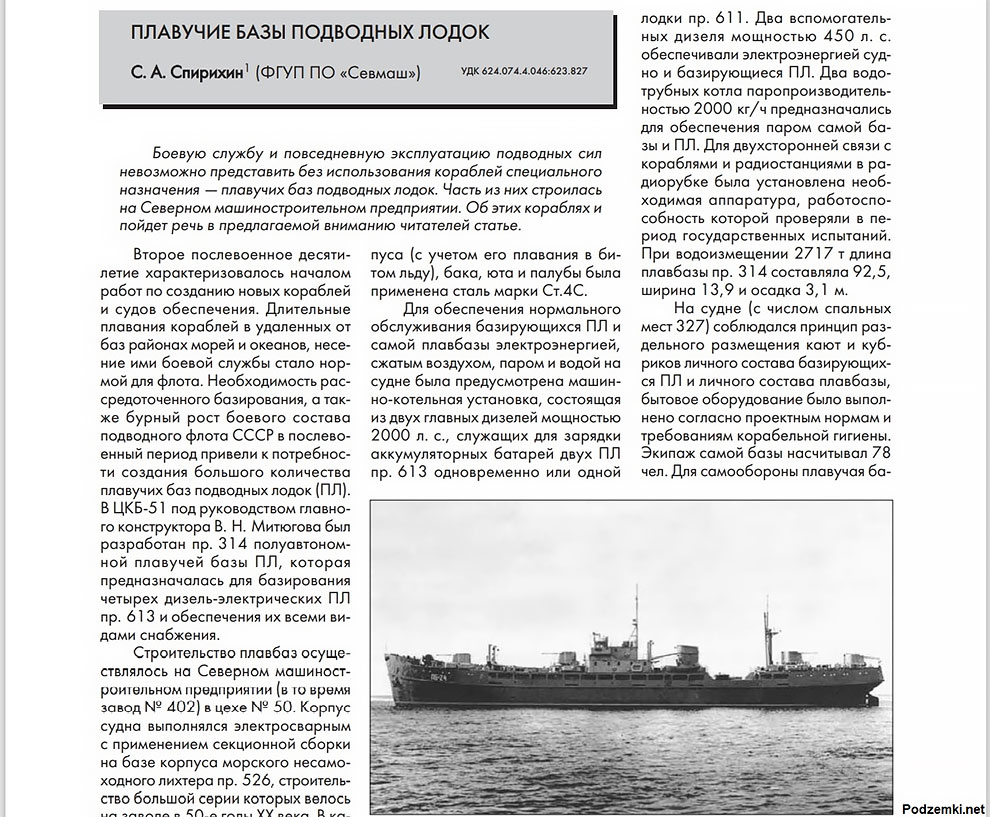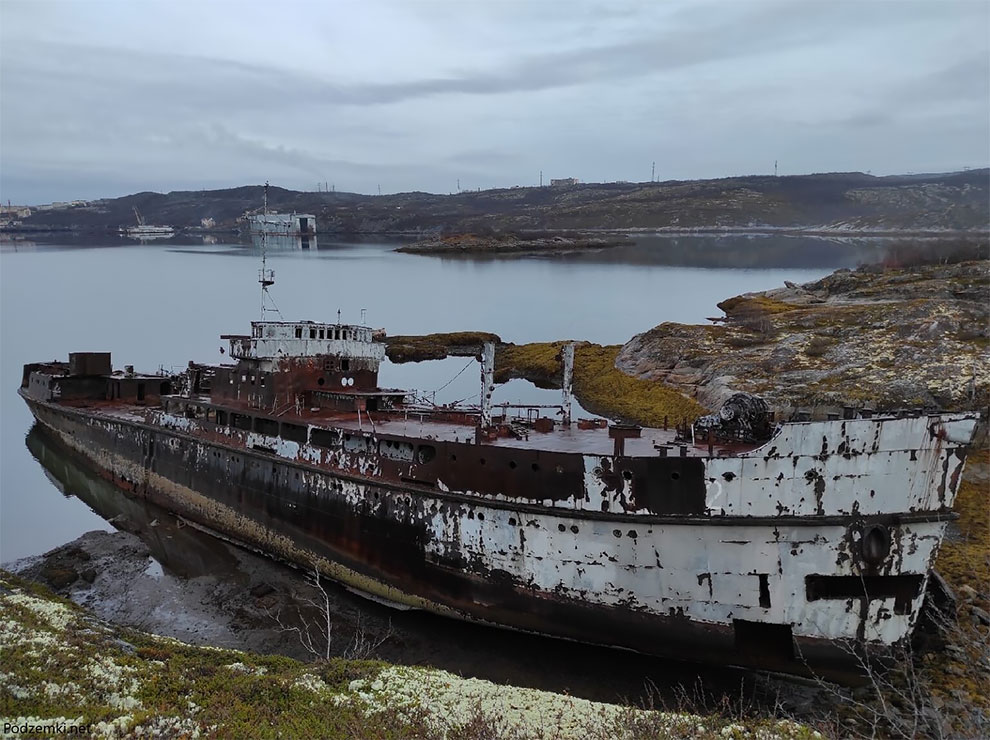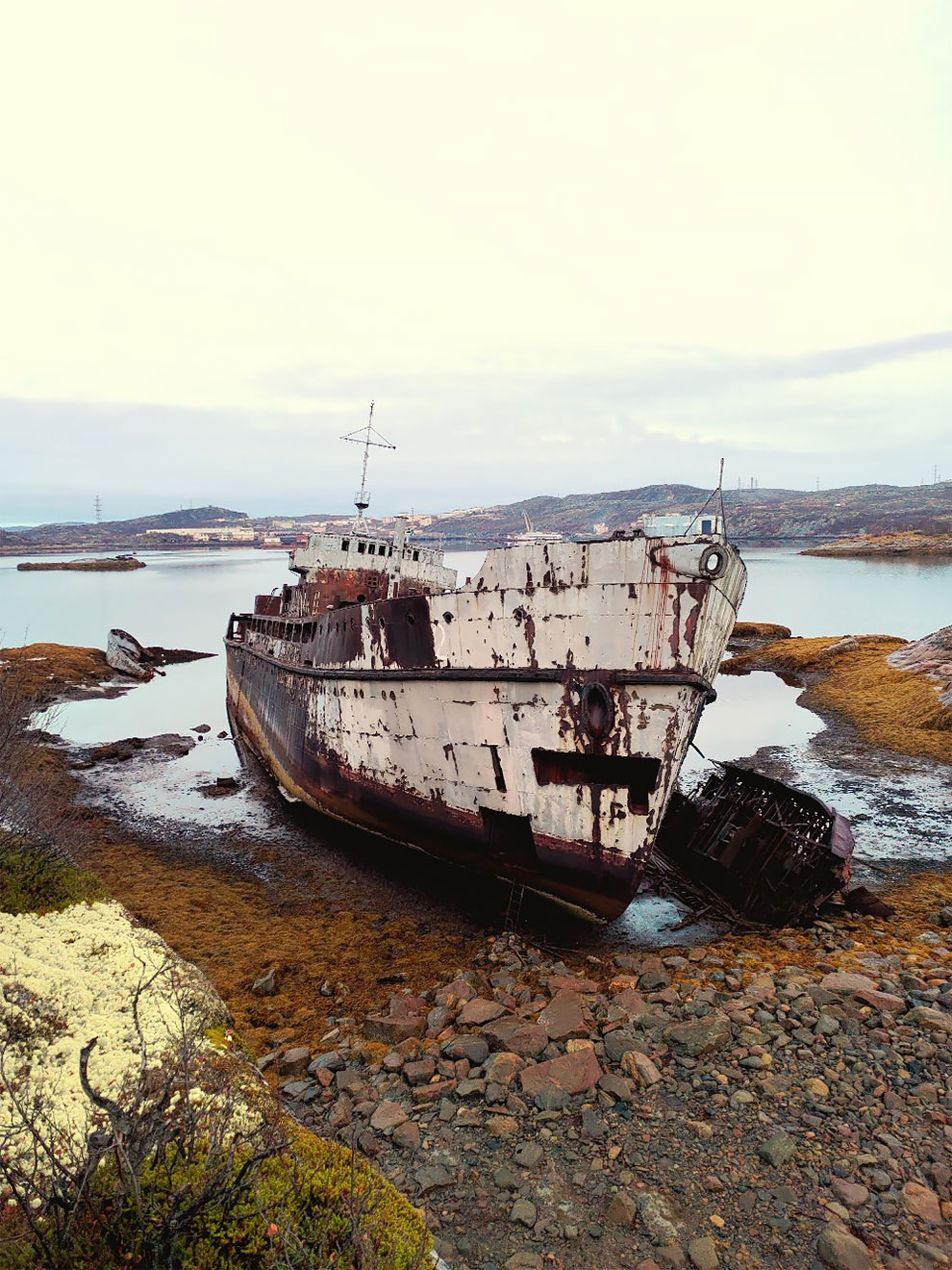Abandoned Floating Submarine Base PB-24. The Only One Located In Russia.
Abandoned military ships on the shore of Pala Bay, Murmansk region. Some have turned into decayed carcasses. Others still hope for the day of scrapping. They say that this place is still a dangerous source of radiation because this tanker could have carried radioactive wastes.
According to the site of enthusiasts of industrial tourism from the Murmansk region, Russia: “General view of Pala Bay, Green Island can be seen in the background. The island is literally strewn with shipwrecks, until recently the hull of a technical tanker of project 1783A lay on its shore. According to rumors this tanker was used to transport radioactive waste, they say the bottom of the bay in the area of the island still has a lot of “phonite”.”
More: EXP51
“The best preserved vessel is PB-24: a floating base of Project 314 for supplying submarines. The submarine base was laid down in May 1956 at plant No. 402. A year later in August 1957 the submarine base has been included in the 162nd brigade of Northern Fleet submarines, stationed in Polyarny. The settlement of Polyarny still has the status of a closed military base, it is only possible to get there by pass or local registration.”
“The hull of PB-24 is surrounded by sunken boats and tugs. They are particularly visible at low tide.”
“Went down to the water to climb up on the deck of the mother ship. In the distance we could see the docks of the Ship Repair Plant “10 SRZ”.”
“In June 1961 PB-24 was redeployed to Zapadnaya Litsa under the 206th Independent Submarine Brigade, in December 1962 it was subordinated to the submarine squadron in Pala Bay. In 1966 PB-24 began to be used as a floating barracks under the new name PKZ-112. It served as a floating barracks until 1975, when it was excluded from the Navy. It is worth noting that all Project 314 floating barracks were later transferred to floating barracks.”
“In total four floating bases were built under project 314, all served in the Northern Fleet. Vessel “Vladimir Egorov” was decommissioned in 1976, “Vasily Veresovoy” in 1978, the vessel “Nikolay Stolbov” served longest and was decommissioned in 1984 (sunk in the Bay of Pechenga, lies at a depth of 30 meters). Only the lead ship of the PB-24 project survived to this day.”
“The Project 314 submarines were designed to supply four Project 613 diesel submarines. The submarines had a special machine and boiler plant for charging submarine batteries, two diesels for supplying the submarines with power, and two water tube boilers for supplying the submarines with steam. The power plant of the mother ship could charge the accumulators of two Project 613 or one Project 611 submarine simultaneously. The floating base also had cabins and quarters for separate accommodation of the submarine crew and the crew of the floating base itself.”
“It’s time to take a look inside the floating base. On top of the hull you can still see the white number 2, which remains from the name of the floating tank PKZ-112.”
“The ship is heavily tilted sideways, which somewhat interferes with movement.”
“In some places, the metal is so rotten that moss is already sprouting through it.”
“The base was never sawed to pieces. It is not easy to saw an entire vessel under the noses of the military, especially since there are rumors among the locals about high levels of radiation in the waters of Pala Bay.”
“Some kind of wreck near the side of PB-24. Inside you can see cylinders, either from the scavenger’s autogas or for divers.”
“View from the deck of the ship at the shipyard in Polarny.”
“It has to be navigated carefully, the floating vessel has been rusting for decades. The hull was designed on the basis of non-self-propelled marine lighter pr. 526 and was designed to navigate in broken ice. For the construction of the main part of the vessel (hull, tank, cabin, deck) was chosen steel St.4s.”
“In the past the PB-24 looked like this. On her deck you can see four automatic 57-mm guns (most likely ZIF-31 naval guns). The floatboat was semi-autonomous, which means it could not move on its own. Seaworthiness – up to six points.”
“Some mechanisms, chains and hatches have been preserved on deck.”
“The floating station had a radio room to provide two-way communication with the ships. The antenna is still in place.”
“The crew of the PB-24 was 78 people, and there were additional sleeping berths to accommodate boat crews (a total of 327 sleeping berths).”
“The PB-24 was autonomous for 30 days in provisions, oil, and fuel, and for 10 days in fresh and industrial water.”
“Even trees are sprouting through the rusty metal. The last of the surviving Project 314 floating crafts is living its century.”
“In 2006, the magazine Shipbuilding published an article about floating craft, including the project 314 (2006, January-February issue).”
“One day the PB-24 will be finally sawed off and scrapped.”
“The single-type floating crafts have long since been scrapped.”










